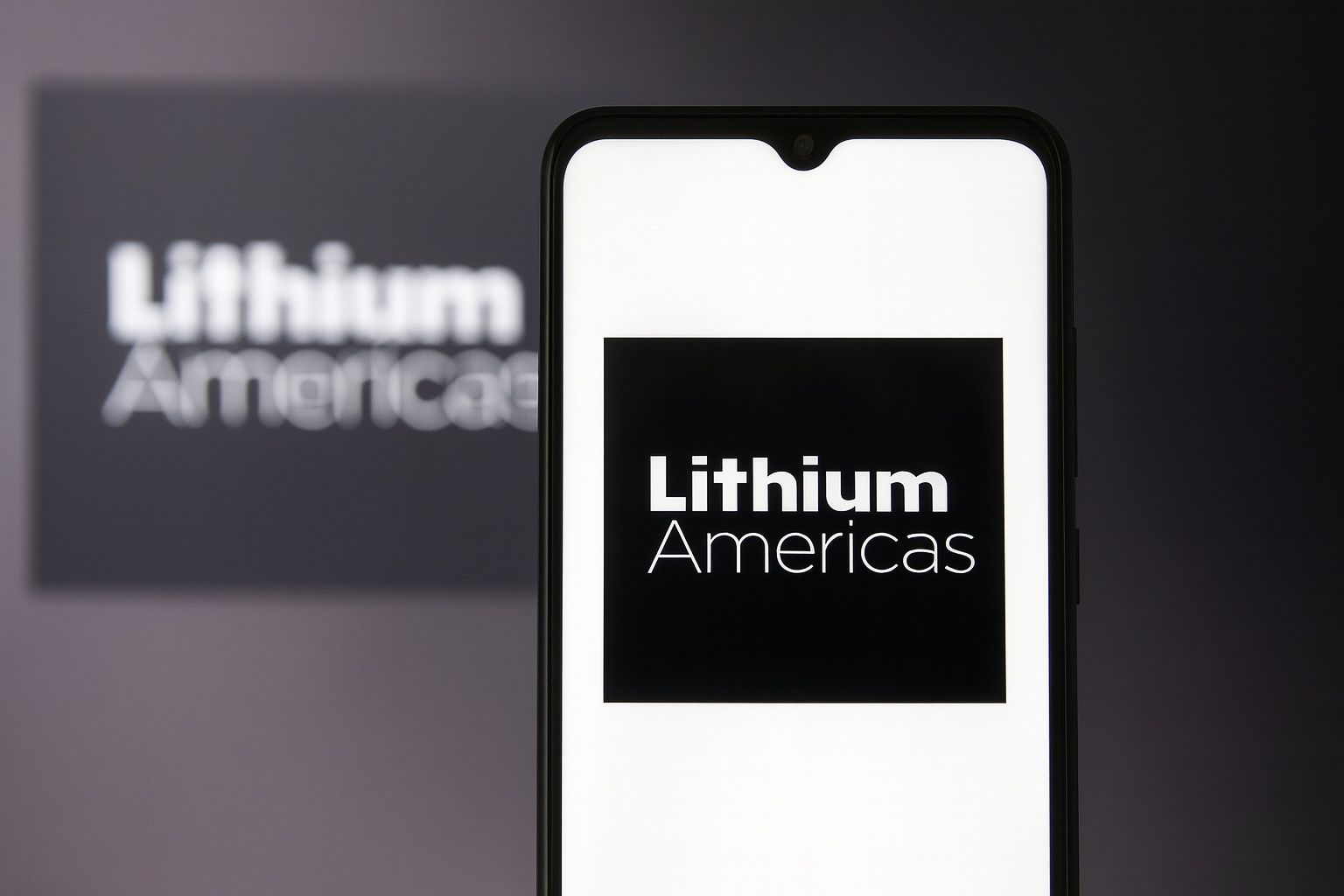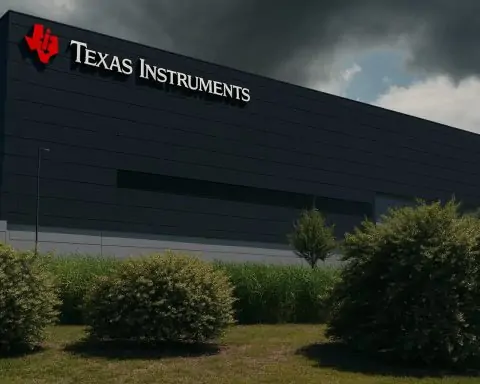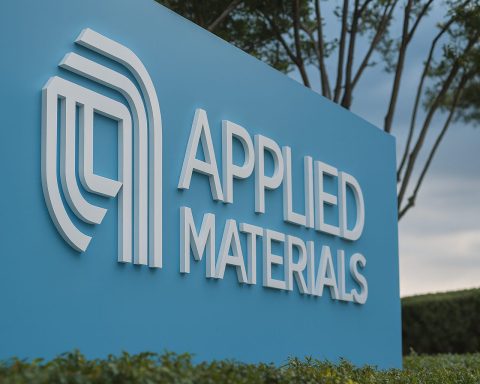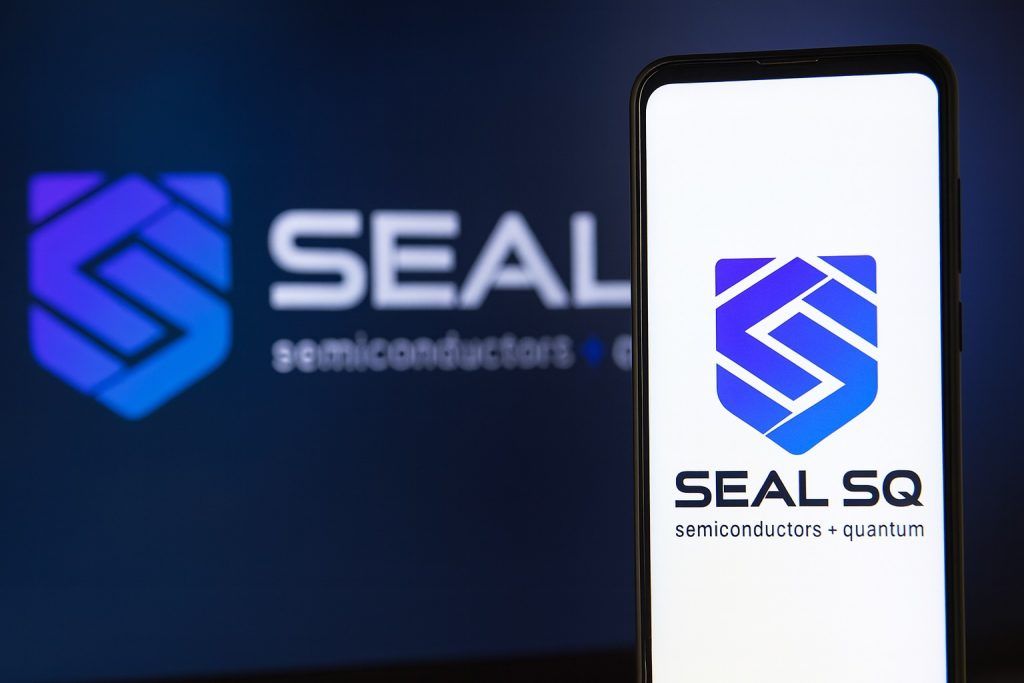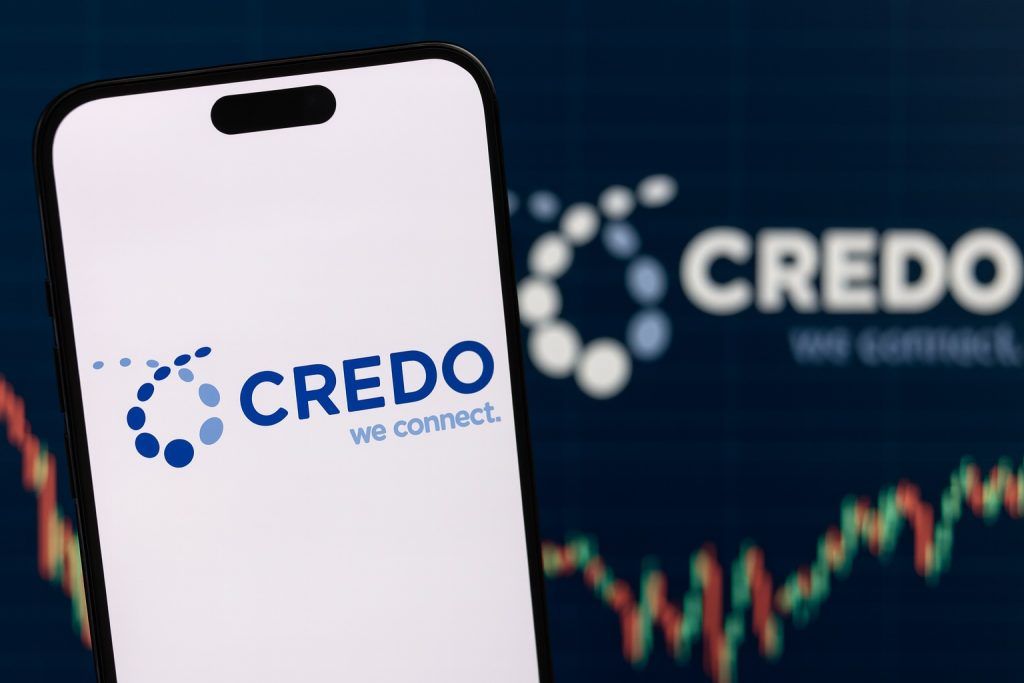- New Highs: Lithium Americas Corp. (TSX: LAC; NYSE: LAC) has skyrocketed in recent weeks, reaching a 52-week high of $9.48 per share on heavy volume [1]. The stock is up over 300% from its spring lows around $2.30 [2], and roughly 233% year-on-year – an impressive surge for a pre-revenue mining developer. It even jumped 19% on Oct. 13 alone to close near $10, reflecting intense investor excitement.
- U.S. Government Stake: In a landmark deal, the U.S. Department of Energy (DOE) will take a 5% equity stake in Lithium Americas and a 5% stake in its Thacker Pass lithium mine joint venture, via warrants priced at a nominal $0.01 [3]. This unprecedented federal investment – the first direct U.S. ownership in a lithium project – comes as part of a revised $2.23 billion DOE loan package to finance the Nevada mine [4] [5]. The news, first reported in late September, sent LAC stock surging nearly 90% in one day [6] and has been a key driver of its recent rally.
- Analyst Reactions Mixed: Wall Street is cautiously optimistic yet divided after LAC’s vertical leap. BMO Capital Markets raised its price target to $5.00 (from around $3) citing the DOE’s involvement [7], and Wedbush Securities called the government deal a “game-changer” while upping its target to ~$8 [8]. However, TD Cowen and TD Securities both downgraded LAC from “Buy” to “Hold” with $5 targets after the spike [9] [10], and Scotiabank bluntly labeled the stock “sector underperform” (sell) due to an unsustainable valuation [11]. The consensus 12-month target now stands around $5.30, with 3 Buy, 9 Hold, and 3 Sell ratings – well below the current ~$9–10 share price [12] [13].
- Insider Selling & Volatility: The meteoric share price has prompted some insiders to cash out. Lithium Americas’ VP for North America, Alexi Zawadzki, sold ~354,000 shares at ~$9.48 on Oct. 1, trimming his stake by nearly 90% [14] [15]. This, along with the stock’s wild swings (up 96% one session, down 12% another), highlights high volatility and has injected caution into the market. Short-term uncertainties – including speculation that the new U.S. administration might review or alter the DOE loan terms [16] – have also weighed on sentiment after the initial euphoria.
- Lithium Demand vs. Supply: Despite recent price dips in lithium, long-term market trends appear favorable. Global EV sales are projected to exceed 20 million in 2025 (about 25% of new cars) [17], and lithium demand is expected to more than double by 2030 to ~2.4 million tonnes LCE [18]. Lithium prices collapsed ~80% from late 2022 peaks amid a wave of new supply, but analysts see the glut bottoming out – with deficits re-emerging by the late 2020s as EV adoption accelerates [19]. This robust outlook underpins the bullish thesis for Lithium Americas as a future U.S. supplier, even as the company navigates near-term challenges.
Government Stake Fuels a Lithium Americas Rally
Shares of Lithium Americas exploded to multi-year highs in late September after news broke that Washington was eyeing an equity stake in the company. On Sept. 24, Reuters reported that the Trump administration (in negotiations over a DOE loan) was considering taking up to a 10% ownership of LAC [20]. The market reaction was immediate – LAC closed that day at C$8.37 in Toronto (~US$6.03 in New York) after jumping almost 90% in one session [21] [22]. This marked a stunning reversal for a stock that had languished near all-time lows (around $2–3) just weeks prior.
The appeal for investors was clear: a U.S. government stake would strongly validate the strategic importance of Lithium Americas’ flagship Thacker Pass project. “The move underscores President Donald Trump’s increasing use of direct government ownership to steer strategic sectors and curb reliance on China,” Reuters noted [23]. Indeed, China currently dominates lithium refining (over 75% of battery-grade lithium is processed there [24]), so a domestic supply is seen as critical for U.S. national security. By taking an equity stake – sometimes dubbed a “white gold” strategy in reference to lithium – Washington signaled it is putting skin in the game to ensure Thacker Pass succeeds.
Enthusiasm only grew when the stake became official. In early October, Lithium Americas announced the DOE loan agreement had been finalized, including a provision granting the DOE warrants for 5% of LAC’s common shares and 5% of the Thacker Pass JV at a nominal exercise price [25]. In exchange, the DOE agreed to more favorable loan terms, deferring $184 million of initial loan repayments for five years [26]. The first $435 million tranche of the low-interest, 24-year loan was unlocked immediately [27] [28]. This extraordinary federal backing – described as a “game-changer” by Wedbush analysts [29] [30] – instantly boosted investor confidence in Lithium Americas’ ability to finance and complete the mine.
LAC’s stock surged again on Oct. 1, climbing 23% in a single day to around $7–8 [31] after the DOE deal news hit. By Oct. 14, shares pushed above $10, giving Lithium Americas a market capitalization over $2 billion and marking a year-to-date gain of 250%+ [32] [33]. Such gains are remarkable for a company that has yet to generate revenue. As Investing.com noted, the rally “underscores the positive momentum and strategic advancements” around Lithium Americas, even though it remains unprofitable and likely trading above its fair value by conventional metrics [34]. The company’s strong balance sheet – with a current ratio near 10 and more cash than debt – provides some fundamental support [35], but there’s no question that government fervor and the EV boom narrative have been the primary fuel for LAC’s ascent.
DOE Loan Secured; Project Fully Funded with GM Partnership
The transformational DOE loan and equity stake come on top of an existing strategic partnership with General Motors (GM). Early in 2023, GM invested $650 million into Thacker Pass for a 38% project stake, securing rights to purchase up to 100% of Phase 1 lithium production for the first 20 years [36]. After Lithium Americas split off its Argentine assets in late 2023, GM also took roughly a 9.4% equity stake in the “new” Lithium Americas focused on North America [37] [38]. This makes GM the company’s largest shareholder, aside from the U.S. government’s pending warrants.
With the DOE’s $2.2B financing and GM’s funding, Thacker Pass is now fully funded through construction. Lithium Americas CEO Jonathan Evans has indicated that Phase 1 of the mine (targeting 40,000 tonnes per year of lithium carbonate) is on track, with first production expected by late 2027 and full capacity by 2028 [39]. The DOE loan’s ultra-low interest rate (effectively the U.S. Treasury rate, with no added spread) and 24-year term provide generous financing terms [40], minimizing the burden on the company during the critical build-out period. In return, the government not only gets equity upside but also presumably influence over project execution and offtake security. “Offtake agreements [are] key,” noted one analyst, as the government wants assurance that lithium produced will feed the domestic supply chain [41]. (According to Reuters sources, officials even sought guarantees that GM will indeed buy Thacker Pass’s lithium output as planned [42].)
To further support the project, GM and Lithium Americas amended their offtake agreement alongside the DOE deal. The amendment allows Lithium Americas to sell any production not needed by GM to third-party buyers [43] [44], ensuring the mine can pursue additional customers (and revenue) if it ramps up beyond GM’s requirements. This flexibility could become important in later phases, as Thacker Pass has potential to expand production or as other U.S. battery manufacturers seek local lithium supply.
It’s worth noting that Lithium Americas has aggressively bolstered its finances this year even prior to the DOE loan. The company raised about $100 million via an at-the-market (ATM) share offering through mid-2025 [45], and it secured a $220 million investment from Orion Mine Finance (a mining-focused fund) in Q2 [46]. As a result, Lithium Americas held over $500 million in cash on its balance sheet as of mid-year [47]. This cash, combined with the DOE and GM funds, gives LAC a war chest to cover construction costs at Thacker Pass (estimated around $2.27B for Phase 1) without needing further near-term equity dilution or debt. All major federal and state permits have been obtained and legal challenges resolved, clearing the way for full-scale construction [48]. In short, the pieces are now in place – permits, partners, and funding – for Lithium Americas to transition from a developer to an operating lithium producer in the next 2–3 years.
Analysts Pump the Brakes as Stock Overshoots Targets
While the U.S. government’s backing has undeniably altered Lithium Americas’ outlook, many equity analysts caution that the stock has run well ahead of fundamentals. Following the rally, the consensus rating on LAC is only a “Hold” and the average 12-month price target hovers in the $5–6 range [49] [50] – roughly half the current trading price. In the past two weeks, multiple brokerages downgraded the stock, essentially telling investors that the easy money may have been made:
- TD Cowen / Cowen & Co.: Downgraded LAC from Buy to Hold on Sept. 24, the day of the big spike [51]. Cowen’s team still sees strategic value in Thacker Pass (they noted a government stake “would lend credence” to completing expansion phases [52]), but they worry the stock’s valuation already reflects much of that upside. They maintain a $5.00 target [53].
- TD Securities: Also cut the stock to Hold (from Speculative Buy) on Sept. 25 with a $5.00 target [54]. TD’s analysts essentially align with their Cowen colleagues (Cowen is now owned by TD), voicing concern that LAC’s market cap – now around $2.5 billion – factors in years of future growth that still carry execution risk.
- Scotiabank: Perhaps the most bearish, Scotiabank raised its target price from $2.75 to $5.00 after the DOE deal but simultaneously labeled LAC “Sector Underperform” [55]. In other words, even at $5 they see the stock as overvalued. Scotia’s rationale is that Lithium Americas’ valuation is difficult to justify given it won’t generate revenue until 2027+ and lithium prices are well below peak. They warned of an oversupplied lithium market in the near term and advised taking profits after the stock’s parabolic move [56] [57].
- Canaccord Genuity and Cormark: These Canadian firms likewise moved to Hold. Canaccord trimmed its outlook due to the “full valuation post-rally” and noted potential capital structure uncertainties as the government comes on board [58]. Cormark cut LAC to Hold on Oct. 2, likely for similar reasons [59].
On the bullish side, a few analysts have become more optimistic because of the DOE deal. Wedbush Securities reportedly upgraded LAC or at least lifted its target into the high-single digits (around $8) after the loan stake news, calling the federal support “a game-changer that derisks the project’s financing” [60]. BMO Capital Markets, as mentioned, bumped its target to $5 from the low-$3s [61] – a notable hike, though still implying downside from current prices. J.P. Morgan, for its part, reiterated a Hold rating in early October, preferring to wait and see how the company executes now that it has funding. Jefferies analysts pointed out that Washington’s preference for equity stakes (over direct subsidies) can indeed “support financing [and] corporate profits” for critical mineral firms [62], but they have not yet issued a bullish call on LAC publicly.
The upshot: professional analysts largely remain skeptical that Lithium Americas’ near-$10 share price is justified today. Many on Bay Street and Wall Street appear to be in “show me” mode – impressed by Thacker Pass’s potential but wanting to see tangible progress (and perhaps a pullback to a more attractive entry point) before jumping in. The current analyst consensus is Neutral/Hold, with 13 out of 15 analysts advising patience or caution [63]. Their average price target of ~$5.30 suggests expectations of a share price roughly 40–50% lower than where LAC trades now [64]. That disconnect highlights the frothiness of LAC’s rally, unless the company materially outperforms current development plans.
It’s not just analysts waving yellow flags – insiders have taken advantage of the rally to sell stock, which can be a red flag. A recent SEC filing showed Vice President Alexi Zawadzki sold 353,914 LAC shares at an average ~$9.48 on Oct. 1 [65]. This single sale was worth over $3.35 million and reduced his personal stake by 89.8% [66]. While insiders sell for many reasons, the sheer size of the sale (virtually his entire holding) at multi-year high prices suggests an opportunistic move to lock in gains. Investors took note – that insider sale news, combined with the slew of downgrades, coincided with LAC stock pulling back about 12% in early October from its highs. It’s a reminder that even those closest to the company see the current valuation as at least debatably rich.
Another point of uncertainty is political risk: the DOE loan and stake came under a prior administration’s initiative, and it remains subject to standard closing conditions and approvals [67]. If U.S. politics shift or if there is any delay in meeting the loan conditions, the market could grow jittery. (For instance, there were murmurs that the incoming administration might “review” the $2.3B loan commitment [68], though no changes have been announced.) So far, both U.S. political parties appear supportive of domestic EV supply chains, but investors will be watching to ensure the government’s support for LAC stays on track through the 2024 election cycle and beyond.
Lithium Market Trends Brighten Long-Term Outlook
Even as analysts debate Lithium Americas’ short-term valuation, there is broad agreement on the strong long-term demand trajectory for lithium – which underlies the bullish case for LAC stock. Electric vehicle adoption continues to accelerate worldwide, driving a structural increase in lithium consumption for battery production. In 2025, global EV sales are projected to reach 20–21 million units, roughly 25% of new auto sales, up from just 3 million EVs sold in 2020 [69]. Every new EV requires kilograms of lithium in its battery pack, so this wave of electrification is set to double or triple lithium demand over the next decade. Industry forecasts call for lithium demand to exceed 2 million tonnes (LCE) by 2030, more than double 2022 levels [70].
However, the lithium industry is emerging from a period of whiplash. In 2022, lithium prices hit all-time highs (over $70,000 per tonne for battery-grade carbonate) amid a supply crunch, then plunged nearly 80% into 2023 as new mines (mostly in China and Australia) came online [71]. By early 2024, lithium carbonate prices had fallen to multi-year lows – a relief for battery makers, but a concern for lithium producers’ profitability. This year, prices have stabilized in a lower range (recently around ¥73,000/ton in China, roughly $10,000/ton) [72]. The market is finely balanced: currently a slight surplus in supply has kept prices soft, but surging EV demand could swing the market back to deficit in a few years. In fact, some analysts project that by 2025 the lithium market may tip into shortage again (perhaps a 40-60,000 tonne shortfall globally) and that deficit could widen dramatically to 700,000+ tonnes by 2030 if not enough new projects are developed [73].
This boom-bust-boom pattern underscores both the opportunity and risk for Lithium Americas. On one hand, Thacker Pass is timed to enter production in 2027 just as the next lithium supply crunch may be in full swing – positioning the company to benefit from rebounding prices and ravenous demand. The project’s large scale (40,000 tpa in Phase 1, with potential expansion beyond) would make Lithium Americas one of North America’s top lithium suppliers, crucial for U.S. battery manufacturing plans. And unlike many rivals, LAC now has the funding and permits in hand to actually deliver new supply on that timeline, a significant competitive advantage. These factors contribute to the “bull case” for LAC as a way to play the EV revolution and America’s push for supply-chain independence. It’s telling that even the U.S. government is willing to invest directly – a vote of confidence that domestic lithium production is strategically vital [74] [75].
On the other hand, lithium is a commodity, and its price volatility will likely continue. If EV sales growth underwhelms or if too many new mines come online at once, lithium prices could stay depressed longer, squeezing project economics. Lithium Americas is shielded somewhat by its partnership with GM – which has agreed to buy a large portion of output at presumably agreed pricing – and by the possibility of the government providing offtake price guarantees as part of its stake [76]. Morningstar’s sector analyst Seth Goldstein noted that a federal equity stake could come with mechanisms to ensure Thacker Pass remains profitable “even if lithium prices remain lower for longer,” for example through minimum price contracts [77]. Such arrangements would significantly de-risk the project’s revenue stream. Nonetheless, until Thacker Pass actually comes online and generates cash flow, LAC remains a story stock tied to future lithium market conditions.
Outlook: Balancing Hype with Execution
Lithium Americas now sits at the intersection of powerful forces: sky-high investor expectations, underpinned by government and industry support, versus the practical challenges of executing a large mining project and the realities of commodity cycles. In the near term, traders should brace for continued volatility. The stock’s float has expanded (LAC issued nearly 27 million new shares this year via the ATM offering [78]), and at least one high-ranking insider took the opportunity to sell at recent highs [79] [80] – signals that volatility cuts both ways. A single tweet or headline (positive or negative) about EV policy, Chinese supply, or loan politics could send LAC swinging sharply, as recent weeks have shown.
Over the medium term (next 6–12 months), much of Lithium Americas’ fate will hinge on hitting development milestones at Thacker Pass. Management will need to convert the DOE loan money into visible progress: completing detailed engineering, ordering long-lead equipment, starting heavy construction at site, etc. Any delays or cost overruns could test investors’ patience, especially after the initial excitement fades. The company also plans to split the DOE warrants between Lithium Americas Corp. and the Thacker Pass JV [81] – the timing and execution of that equity issuance (even at $0.01, the dilution of 5% must be accounted for) will be something to watch. There is also the matter of drawing down the DOE loan tranches over time, which likely come with conditions attached (the press release mentions “mutually agreed and customary conditions” for effectiveness [82]). For example, LAC may need to raise some additional equity or meet technical targets to unlock each phase of funding. Investors will be looking for clarity on these points in the coming quarterly reports.
Despite those caveats, the broader trajectory for Lithium Americas remains promising if one’s investment horizon is measured in years rather than weeks. The combination of strong tailwinds (EV growth, U.S. policy support, GM partnership) and reduced financing risk has fundamentally improved the company’s prospects compared to just a few months ago. Even some cautious analysts concede that LAC could “grow into” its current valuation if all goes well – i.e. if Thacker Pass comes online on schedule, on budget, and lithium demand rises as projected. At that point (late this decade), Lithium Americas would transform into a major revenue-generating miner, potentially justifying today’s multi-billion valuation.
For now, the stock’s gravity-defying run has made it a standout performer in 2025 – but also a subject of debate. Is Lithium Americas the next great American lithium success story, or has the market gotten ahead of itself? The answer will depend on execution and external conditions in equal measure. As one trader quipped following the wild swings: “If you’re still guessing at the end of your analysis, it’s probably not a trade worth taking” [83]. In other words, prospective investors should do their homework and size positions carefully. Lithium Americas has undeniably entered a new era with heavyweights like the U.S. government and GM in its corner. Now comes the hard part: delivering on the promise. The long-term outlook for lithium is bright, but LAC’s stock may continue to ride the roller coaster of sentiment in the months ahead as the market digests what this ambitious company can realistically achieve.
Sources:
- Reuters – “Lithium Americas soars 90% as Washington considers stake” (Sept. 24, 2025) [84] [85]
- Lithium Americas press release – “Lithium Americas Finalizes DOE Loan Amendments and… ATM Update” (Oct. 7, 2025) [86] [87]
- Investing.com – “Lithium Americas stock hits 52-week high at $9.48” (Oct. 14, 2025) [88] [89]
- MarketBeat – “Lithium Americas Trading Up 12.5% – Here’s Why” (Oct. 13, 2025) [90] [91]
- TechStock² (TS2.Tech) – “Lithium Americas (LAC) Soars on U.S. ‘White Gold’ Stake – Latest News & Expert Outlook” (Oct. 6, 2025) [92] [93]
- TechStock² – “Lithium Americas Stock Skyrockets on U.S. Stake Rumor – EV Boom, 2025 Outlook” (Sept. 24, 2025) [94] [95]
- StockToTrade News – “Lithium Americas Tumbles After Downgrades” (Oct. 11, 2025) [96] [97]
References
1. www.investing.com, 2. www.investing.com, 3. www.lithiumamericas.com, 4. www.lithiumamericas.com, 5. ts2.tech, 6. www.reuters.com, 7. www.investing.com, 8. ts2.tech, 9. www.investing.com, 10. www.marketbeat.com, 11. stockstotrade.com, 12. www.marketbeat.com, 13. www.marketbeat.com, 14. www.marketbeat.com, 15. www.marketbeat.com, 16. stockstotrade.com, 17. ts2.tech, 18. ts2.tech, 19. ts2.tech, 20. www.reuters.com, 21. www.reuters.com, 22. www.reuters.com, 23. www.reuters.com, 24. www.reuters.com, 25. www.lithiumamericas.com, 26. www.lithiumamericas.com, 27. ts2.tech, 28. ts2.tech, 29. ts2.tech, 30. ts2.tech, 31. ts2.tech, 32. www.barchart.com, 33. www.barchart.com, 34. www.investing.com, 35. www.investing.com, 36. ts2.tech, 37. ts2.tech, 38. ts2.tech, 39. ts2.tech, 40. ts2.tech, 41. www.reuters.com, 42. www.reuters.com, 43. www.lithiumamericas.com, 44. ts2.tech, 45. www.lithiumamericas.com, 46. ts2.tech, 47. ts2.tech, 48. ts2.tech, 49. www.marketbeat.com, 50. ts2.tech, 51. www.marketbeat.com, 52. www.reuters.com, 53. www.marketbeat.com, 54. www.marketbeat.com, 55. www.marketbeat.com, 56. ts2.tech, 57. ts2.tech, 58. stockstotrade.com, 59. www.marketbeat.com, 60. ts2.tech, 61. www.investing.com, 62. www.reuters.com, 63. www.marketbeat.com, 64. www.marketbeat.com, 65. www.marketbeat.com, 66. www.marketbeat.com, 67. www.lithiumamericas.com, 68. stockstotrade.com, 69. ts2.tech, 70. ts2.tech, 71. ts2.tech, 72. tradingeconomics.com, 73. ts2.tech, 74. www.reuters.com, 75. www.reuters.com, 76. www.reuters.com, 77. www.reuters.com, 78. www.lithiumamericas.com, 79. www.marketbeat.com, 80. www.marketbeat.com, 81. www.lithiumamericas.com, 82. www.lithiumamericas.com, 83. stockstotrade.com, 84. www.reuters.com, 85. www.reuters.com, 86. www.lithiumamericas.com, 87. www.lithiumamericas.com, 88. www.investing.com, 89. www.investing.com, 90. www.marketbeat.com, 91. www.marketbeat.com, 92. ts2.tech, 93. ts2.tech, 94. ts2.tech, 95. ts2.tech, 96. stockstotrade.com, 97. stockstotrade.com
